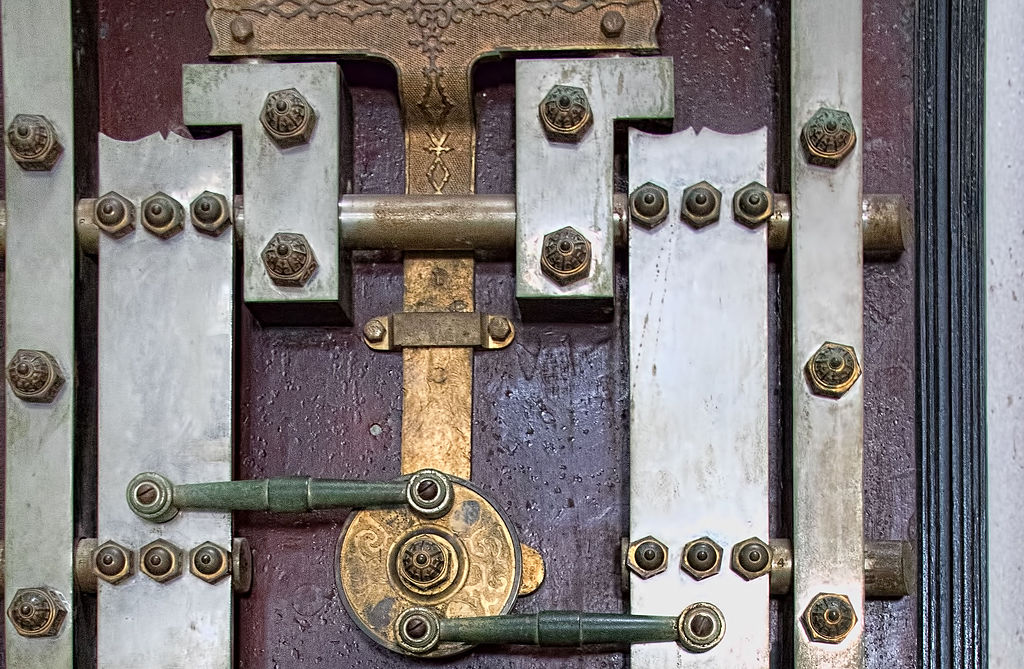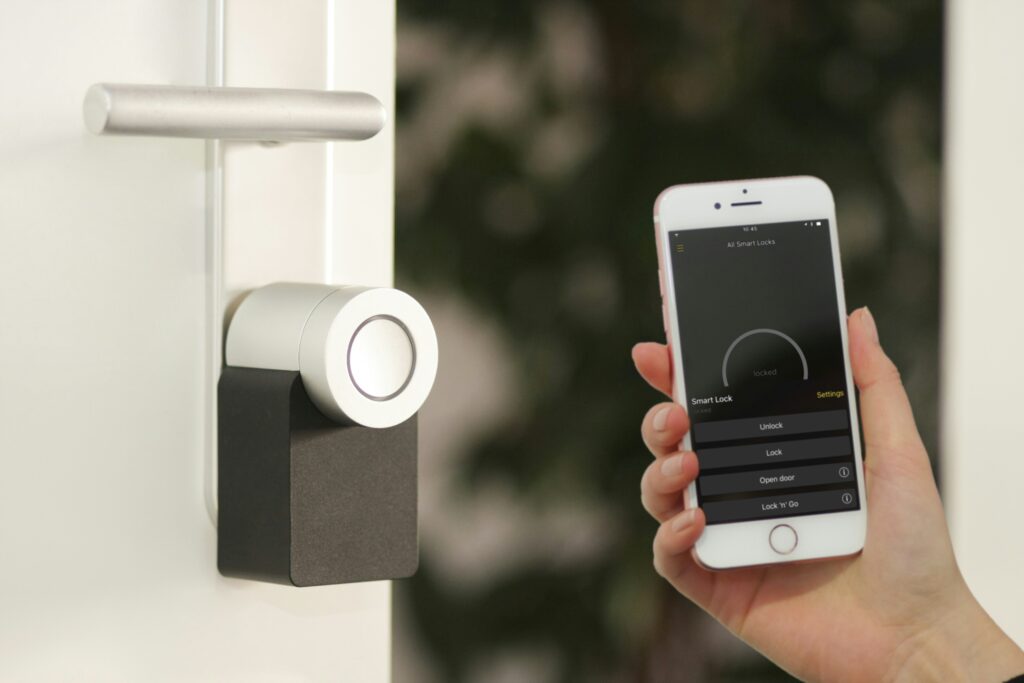
From the ancient world to modern technology, locks have played a vital role in safeguarding our homes. We depend on locks to protect our belongings and spaces. Locks are not a modern invention. They have been used since civilization dawned. Here is a glimpse into the fascinating history of locks, listing 15 unique mechanisms used throughout time.
Egyptian Pin Tumbler Lock (3000 BC)

Considered the oldest known lock, this ingenious invention used wooden pins that fell into place when the correct key was inserted. Made from wood and ivory, these locks offered basic security for valuables in pharaoh’s tombs and wealthy households. They were used during the ancient Egypt era and are not in use today
Warded Lock (8th Century BC – Present Day)

This simple yet effective design features a key with a projecting bar (ward) that lifts obstacles within the lock, allowing the bolt to slide. Variations of warded locks remained popular for centuries due to their ease of construction and affordability. While not the most secure option, some basic warded padlocks are still globally used for low-security applications.
Roman Lock with Spring Mechanism (1st Century BC)

The Romans introduced a lock design that incorporated a spring mechanism along with a warded system. This innovation made picking more difficult and offered a higher level of security. Examples of these locks have been found in Pompeii. Their usage was widespread in the Roman Empire. They are not in use today.
Deadbolt Lock (Early Middle Ages – Present Day)

This robust lock features a separate bolt that slides into the door frame, offering a higher level of security than just securing the latch. Invented sometime in the early Middle Ages, deadbolts became a mainstay in home security and remain a popular choice today, often combined with other locking mechanisms for enhanced protection. These locks are used globally.
Lever Lock (17th Century – Present Day)

This innovative lock uses levers within the mechanism that must be lifted in the correct sequence by the key for the bolt to retract. Invented in the 17th century by Robert Barron, lever locks offered a significant improvement in security compared to earlier designs. Variations of lever locks are still widely used, often alongside pin tumbler mechanisms for increased complexity.
Wafer Lock (17th – 19th Century)

This type of lock utilizes flat metal wafers that have to align correctly with the key for the bolt to move. While offering a decent level of security, wafer locks were susceptible to picking techniques. They were commonly used in furniture and cabinets throughout the 17th and 19th centuries, primarily in the European and North American regions. They are in limited use today.
Pin Tumbler Lock (18th Century – Present Day)

This highly secure design, patented by Linus Yale Sr. in 1784, utilizes pins of varying lengths that must be pushed up to specific heights by the key for the cylinder to rotate and unlock. Pin tumbler locks remain the dominant locking mechanism used in homes today, offering a high degree of security with the ability to create complex key variations.
Combination Lock (18th Century – Present Day)

Invented by John Harrison in the late 18th century, combination locks rely on a series of rotating dials that must be set to the correct combination to unlock. These locks are often used for safes and secure cabinets, offering a keyless option for security. Variations of combination locks with electronic keypads are widely used today.
De La Marre Lock (18th Century)

Designed by Jeremiah Chubb in 1784, this intricate lock featured a double locking mechanism with a complex series of wards and levers. Considered highly secure in its time, the De La Marre lock was often used by royalty and wealthy individuals to protect valuables. While not in common use today, these locks are prized by collectors for their historical significance.
Rim Lock (18th – 19th Century)

Mounted directly on the surface of the door rather than mortised within, rim locks were a popular choice in the 18th and 19th centuries. These locks offered a decorative element alongside their security function, with some featuring ornate designs and finishes. While not as secure as the usual mortise locks, rim locks are still occasionally used in historic restorations. They are in limited use today, mainly in Europe and North America.
Disc Tumbler Lock (19th Century – Present Day)

This innovative design utilizes a series of metal discs with notches that must align with the notches on the key for the lock to open. Disc tumbler locks were invented in the 19th century and offered a more compact and affordable alternative to pin tumbler locks. They are still commonly used globally in padlocks, briefcases, and some door locks today.
Warded Padlock (Medieval – Present Day)
This simple and portable lock design features a hinged shackle that secures around an object. Early versions used a warded key, while modern padlocks often incorporate lever or disc tumbler mechanisms for increased security. Warded padlocks remain a globally popular and affordable option for securing gates, sheds, and other outdoor applications.
Yale Key-in-Knob Lock (19th Century – Present Day)

This convenient design, patented by Linus Yale Jr. in 1848, integrates the lock cylinder directly into the doorknob. Yale key-in-knob locks revolutionized residential security, offering a user-friendly and affordable option for homes. Variations of this design remain a popular choice for interior doors today.
Magnetic Lock (20th Century – Present Day)

Emerging in the 20th century, magnetic locks utilize electromagnets to hold a door shut. These locks are globally used in high-security applications or where a clean, keyless aesthetic is desired. They require an electrical current to function and are commonly used in access control systems.
Smart Lock (21st Century – Present Day)

Smart locks are the latest frontier in lock technology. They allow access control through smartphones, key cards, or even voice commands. These internet-connected locks offer a high degree of convenience and security, but raise concerns about potential hacking vulnerabilities. Smart locks are a rapidly evolving technology with the potential to transform home security in the future.

[…] history, brilliant inventors have tirelessly strived to safeguard our homes, laying the foundation for the sophisticated home security systems we rely on today. Let us look at […]
[…] in his career, Linus Yale Jr. set his sights on creating an “unpickable” lock. The ambitious goal fueled his inventions, leading to the development of several innovative lock […]